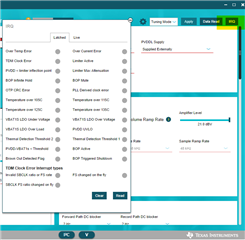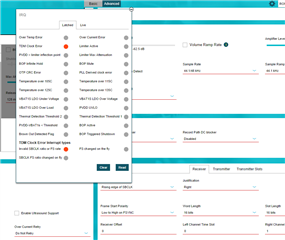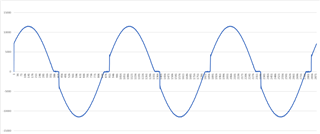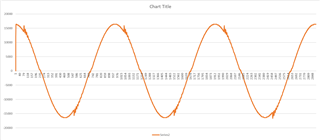Other Parts Discussed in Thread: TAS6582-Q1
Tool/software:
Hi,
I couldn't work out this missing transition on the outp/outn with the I2S audio data values(simulated 50Hz sine wave) within the 16bit range that my micro was transmitting. I have adjusted the volume to -13db and amplification level 11dBV and still getting this silence in the output drive for significant amount /multiple of Fsync. I dont know what is causing this issue. This has cause the Current sense data received to be nil as well as the voltage across the output is zero.
I have tried transmitting the simulated waveform 16bit data(signed) only occupying the L channel and then nil on the R channel with slot selected config > "mono left channel" and still doesnt remove the artefact. what is the mapping of the L & R channel to the output p&n at 1frame? with the "mono left channel" selected, does it mean that it will disregard the data on the R channel?
I have read somewhere on the documentation that the data received from the SDOUT (I/V measurement) is a 2's complement of the values?. is this correct?
I couldn't move on the next stage of this project as I need to ensure that we measure a full sine current waveform whcih we will then use and close the loop to regulate the output voltage.


Jose








